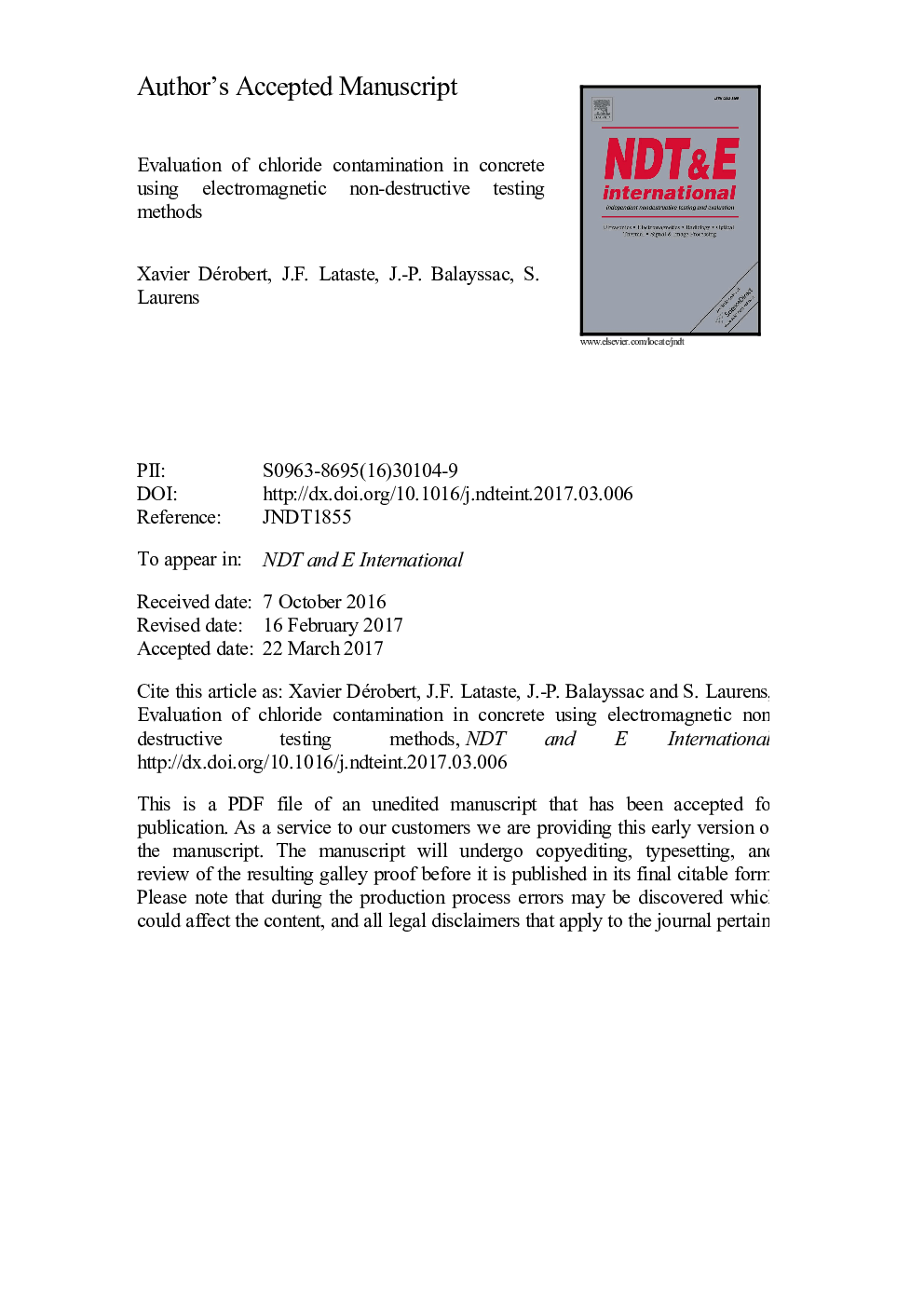| Article ID | Journal | Published Year | Pages | File Type |
|---|---|---|---|---|
| 4925168 | NDT & E International | 2017 | 33 Pages |
Abstract
We present the results of the sensitivity of some electromagnetic non-destructive testing (NDT) methods to chloride contamination. The NDT methods are resistivity, using a quadripole probe, capacitive technique, with few sets of electrodes, and radar technique, using different bistatic configurations. A laboratory study was carried out involving three different concretes with different water to cement ratios. The concretes were conditioned with different degrees of NaCl saturation by means of three solutions containing 0Â g/L, 30Â g/l or 120Â g/l. The solution was homogenized in the concrete by using a specific procedure. Results show that the EM techniques are very sensitive to the chloride content and saturation rate and, on a second level, to the porosity. Multi-linear regression processing was performed to estimate the level of sensitivity of the NDT measurements to the three indicators. Values of ten ND observables are presented and discussed. At last, the uncertainties of the regression models are studied on a real structure in a tidal zone.
Related Topics
Physical Sciences and Engineering
Engineering
Civil and Structural Engineering
Authors
Xavier Dérobert, J.F. Lataste, J.-P. Balayssac, S. Laurens,
